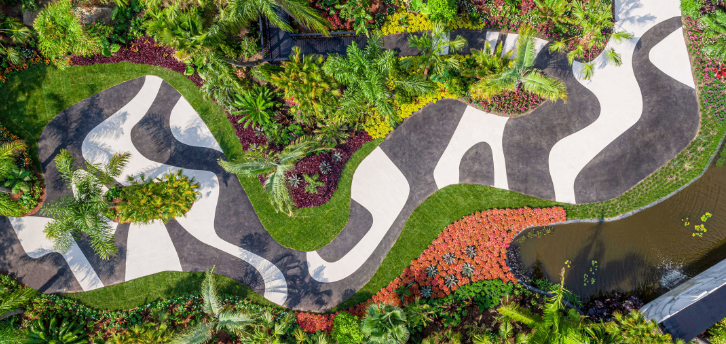Burle Marx and His Landscape Architecture
Burle Marx is a name synonymous with innovative landscape architecture, bringing nature and art together in a way that transformed public spaces around the world. His work is not only aesthetically pleasing but also reflects a deep connection to the environment, making his philosophy relevant for anyone interested in sustainable design and urban planning.
A Pioneer of Landscape Design
Roberto Burle Marx was born in 1909 in São Paulo, Brazil, and became one of the most influential landscape architects of the 20th century. His designs often incorporated native plants, promoting biodiversity while minimizing the use of water and chemicals. Marx’s work emphasized the importance of integrating natural elements into urban spaces, advocating for designs that enhance the landscape rather than overwhelm it. His innovative approach has inspired countless landscape architects to adopt a similar philosophy, focusing on sustainability and environmental responsibility.
Famous Projects and Their Impact
Some of Burle Marx’s most well-known projects include the Garden of the Brazilian Pavilion at the 1939 New York World’s Fair and the Copan Building rooftop garden in São Paulo. Each project showcases his unique blend of artistic vision and ecological awareness. The Brazilian Pavilion garden was a celebration of native flora and became an iconic representation of Brazil’s cultural identity. Likewise, the Copan Building garden has contributed to urban biodiversity, allowing residents and visitors to enjoy green spaces amidst the concrete jungle. Through these projects, Marx influenced urban planning in Brazil and beyond, emphasizing that public spaces should be vibrant and life-affirming.
The Lasting Legacy of Burle Marx
Marx’s legacy extends beyond his individual projects; his influence can be seen in the contemporary world of landscape architecture. His integration of art and nature inspired waves of practitioners, leading to a new understanding of public spaces as extensions of the natural environment. Today, landscape architects continue to draw from Marx’s principles, creating designs that not only look good but also function well within ecosystems. This shift towards embracing the natural world in urban settings is increasingly important as we face modern challenges like climate change and urban sprawl.
In conclusion, Burle Marx’s approach to landscape architecture offers valuable insights into creating sustainable, beautiful public spaces. His work reminds us of the significance of combining nature with urban development, urging us to adopt a perspective that values both aesthetic appeal and environmental health. To discover more about his remarkable contributions and how they can inspire your own landscape projects, delve into the world of Burle Marx and explore the beauty of nature integrated into design.

